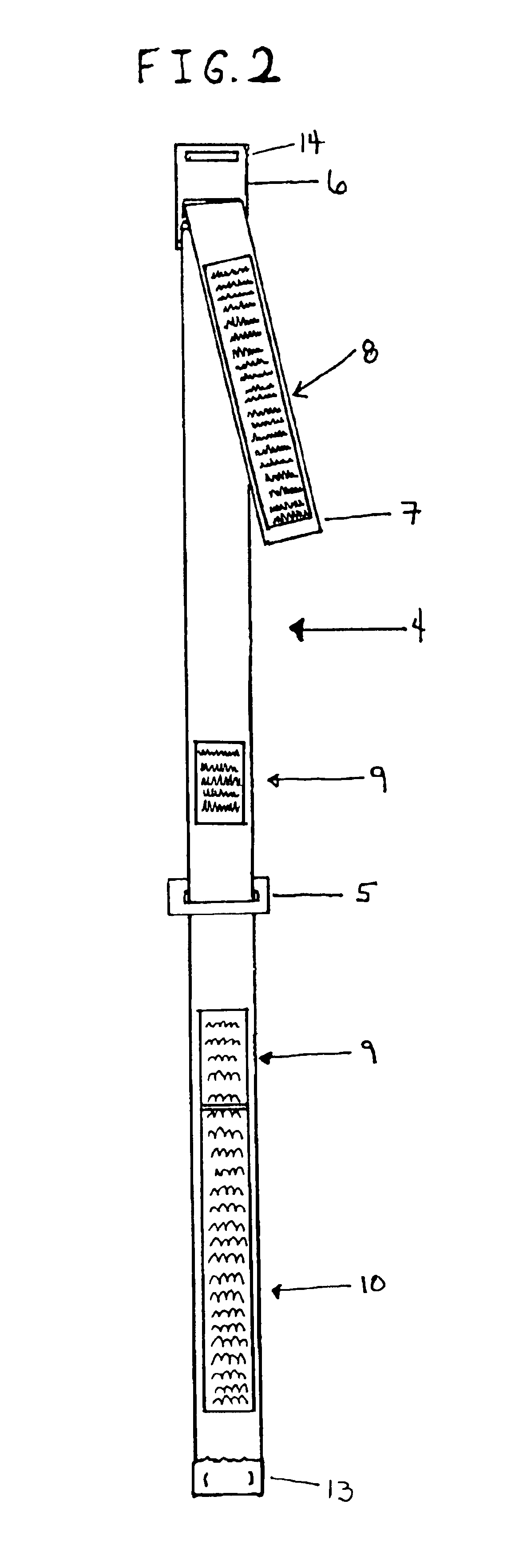Tennis net center strap for measuring and holding net at certain height
a tennis net and center strap technology, applied in the field of tennis net equipment, can solve the problems of degrading the strap material, the strap itself cannot maintain the net at the correct height, and the buckle system cannot hold the strap material sufficiently, so as to achieve the effect of fast installation, measuring, and fast and easy measuremen
- Summary
- Abstract
- Description
- Claims
- Application Information
AI Technical Summary
Benefits of technology
Problems solved by technology
Method used
Image
Examples
Embodiment Construction
A tennis net (1) is suspended between posts across a tennis court by a cable. The installed tennis net center strap (FIG. 4) adjusts and holds the center of the tennis net to regulation height (currently 36 inches) above the surface of the court (2) after being clipped to the center strap anchor (3) in the very center of the tennis court. To achieve this the self-measuring tennis net strap (4) is made of minimally or non-stretching material and employs a single-ended snap clip (5) and a non-slipping cam buckle (6) that preferably has a short, secondary strap (7) with one-half of a hook-and-loop material as a secondary security measure (8) that fastens to its mating one-half of hook and loop material (10) on the main strap (4). A third hook-and-loop securing system (9) is also preferably employed as well. The first measuring mark (11) makes installation and initial measuring extremely fast and easy, while the second measuring mark (12) affirms the net is at the right height, and, if ...
PUM
 Login to View More
Login to View More Abstract
Description
Claims
Application Information
 Login to View More
Login to View More - R&D
- Intellectual Property
- Life Sciences
- Materials
- Tech Scout
- Unparalleled Data Quality
- Higher Quality Content
- 60% Fewer Hallucinations
Browse by: Latest US Patents, China's latest patents, Technical Efficacy Thesaurus, Application Domain, Technology Topic, Popular Technical Reports.
© 2025 PatSnap. All rights reserved.Legal|Privacy policy|Modern Slavery Act Transparency Statement|Sitemap|About US| Contact US: help@patsnap.com



